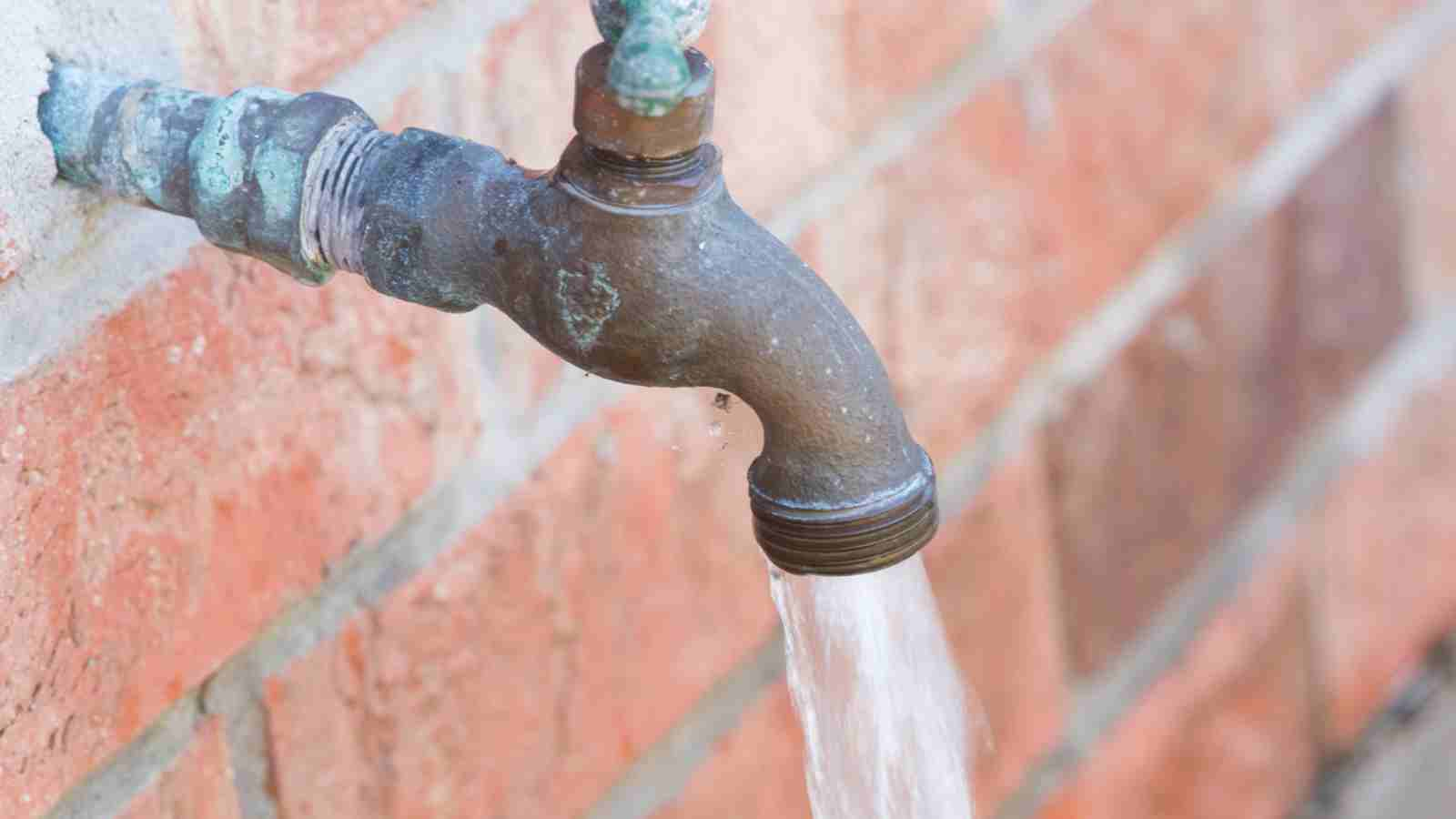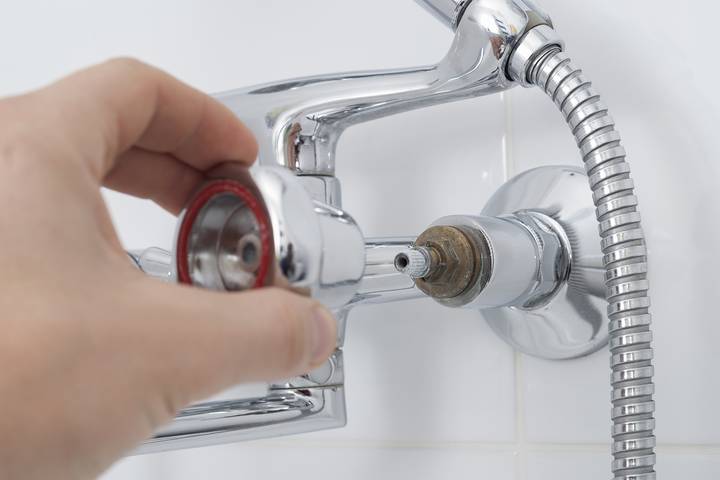Our Influence of a Leaky Faucet
Our Influence of a Leaky Faucet
Blog Article
We've unearthed this great article on How to Fix a Leaky Faucet listed below on the internet and reckoned it made sense to talk about it with you on this site.

Intro
A leaky faucet might appear like a minor nuisance, yet its repercussions expand much beyond the periodic drip. Understanding the impacts of a leaking faucet is critical for both house owners and the environment. In this post, we'll explore the various influences of this typical home concern and why resolving it without delay is vital.
Sources Of Leaky Faucets
Leaky faucets can arise from a variety of elements, consisting of damage, high water stress, and deterioration. In time, the constant use of faucets can lead to worn-out seals and gaskets, triggering leakages to create. In addition, extreme water stress can put strain on plumbing components, bring about leaks. Deterioration and rust can additionally compromise tap components, making them susceptible to leakage.
Water Wastage
Among the most substantial repercussions of a leaking faucet is water waste. Also a little drip can amount to gallons of drainage over time. This not just increases water bills however also adds to water deficiency and ecological deterioration. Resolving leaky faucets immediately is crucial for conserving this precious resource and lessening its impact on the earth.
Financial Impact
In addition to wasting water, leaky faucets can additionally have a substantial financial impact. Raised water costs are a direct repercussion of water wastefulness, setting you back property owners numerous bucks each year. Furthermore, the expense of fixing water damages triggered by leaks can be considerable, specifically if left neglected for an extensive period.
Ecological Impact
The environmental effect of dripping taps extends beyond water waste. By preserving water, homeowners can contribute to more comprehensive efforts to alleviate water scarcity and secure all-natural communities. Sustainable options such as rain harvesting and water-efficient components can better lower the environmental impact of house water use.
Technological Solutions
Developments in innovation have brought about the advancement of wise faucets and water-saving tools that aid lessen water wastage. Smart faucets make use of sensors to identify activity and change water flow as necessary, minimizing waste without compromising benefit. Water-saving devices such as aerators and low-flow showerheads are also efficient in conserving water without endangering performance.
International Perspectives
While leaky taps may feel like a local problem, they contribute to more comprehensive international difficulties such as water deficiency and climate adjustment. In regions already encountering water stress, every decline counts, making leakage avoidance and repair work essential. By embracing water-saving techniques and investing in sustainable technologies, home owners can play their part in addressing these pushing global concerns.
Regulatory Measures
Federal government policies play an essential role in alleviating the impact of dripping faucets and advertising water preservation. From building codes that need water-efficient components to water-saving incentives and refunds, policymakers have a series of devices at their disposal. By implementing and imposing these guidelines, federal governments can guarantee that house owners focus on water preservation in their daily lives.
Neighborhood Impact
Dealing with leaking faucets requires collective efforts at the community degree. By increasing recognition concerning the relevance of water preservation and supplying resources for leakage discovery and repair work, regional authorities can empower home owners to act. Initiatives such as water-saving discount programs and leak detection projects can incentivize habits change and promote liable water usage.
Instance Studies
Real-life examples of the influence of leaking taps underscore the value of proactive maintenance and prompt repairs. From water damage to increasing water costs, the repercussions of neglecting leakages can be severe. By sharing these case studies, property owners can much better comprehend the relevance of attending to dripping taps without delay.
Educational Campaigns
Educational projects play a crucial duty in elevating recognition concerning the impacts of leaking faucets and promoting water conservation techniques. With workshops, seminars, and on-line resources, homeowners can learn how to detect and repair leaks themselves. By empowering individuals with knowledge and tools, instructional projects can cultivate a society of accountable water usage within neighborhoods.
Health and wellness Issues
Dripping taps can create conducive environments for mold and mildew and mildew development, posturing health and wellness risks to owners. The existence of mold can worsen breathing concerns and allergies, particularly in prone individuals. Furthermore, water damages resulting from leaks can jeopardize the architectural integrity of buildings and bring about costly repair services.
Do it yourself vs. Specialist Repair
When faced with a leaking faucet, house owners often discuss whether to attempt repair services themselves or employ an expert plumber. While DIY repair work can save money, they may not always attend to the underlying problem successfully. Expert plumbing technicians have the experience and tools to identify and fix leakages correctly, making certain long-lasting solutions and satisfaction for property owners.
Safety nets
Avoiding leaking faucets needs regular maintenance and aggressive measures. Easy jobs such as changing damaged washing machines and seals can prevent leaks from establishing. Furthermore, updating to high-grade components and reducing water stress can aid lengthen the life-span of taps and lessen the risk of leaks.
Conclusion
In conclusion, the effects of a leaky tap expand much beyond the occasional drip. From water wastage and enhanced water bills to health concerns and ecological effect, the consequences of overlooking leaks can be substantial. By attending to leaking taps immediately and adopting water-saving methods, property owners can minimize these impacts and add to a more sustainable future.
Causes and Consequences of a Leaky Faucet
Although it’s a relatively common issue, many people don’t know what causes a leaky faucet. Additionally, few homeowners are familiar with the consequences of leaky taps, causing them to ignore the problem. However, much of the damage caused by leaky faucets can be prevented by reacting swiftly.
In this article, we’ll provide a better understanding of leaky faucets by listing their causes and consequences.
What causes a leaky faucet?
Many internal pieces of the faucet responsible for turning the water on and off can break. Consequently, they can’t function correctly and will give rise to leaks. Here are a few common causes of leaks:
Loose washers
The washer opens and closes when turning the faucet on and off. This movement produces friction, causing wear and tear. Over time, the washer gets worn out and won’t fit closely to the valve seat, leading to a leak.
Worn out O-rings
O-rings seal gaps between the internal parts of the faucet. If they fail, water can seep through these gaps and result in a leaky faucet.
Poor seals
Many faucets have inlet seals that let water freely flow when turning the faucet on and stop when it is turned off. If there’s too much sediment or water pressure, the seals can suffer damage and cause the faucet to leak.
Corroded valve seat
The valve seat sits at the bottom of the faucet’s mechanism. It plays a part in turning the tap on and off, and it can corrode due to repeated usage. If so, water will be dripping around the handle area.
Worn out faucet cartridge
Single-handle faucets have a faucet cartridge that helps control the water flow. Due to normal wear and tear, the cartridge can start leaking.
What are the consequences of a leaky faucet?
High water bills – Dripping faucets can lead to much higher water bills due to the amount of water wasted. In particular, as much as 17 gallons of water can be wasted during a single day if a faucet has about one drip per second. Mold and rot – Mold can develop in any moist area, making the area around leaky faucets an ideal breeding ground. Also, any wooden elements affected by the leak can eventually rot. Overflows and drain clogs – If the leak persists for a while, it can cause a lot of stress on the plumbing system and lead to overflows and drain clogs. Water stains – Minerals accumulating in the sink due to a leaky faucet can be quite tricky to remove. In the worst-case scenario, you might need to buy a new sink. https://www.jimmyjoesplumbing.com/blog/causes-and-consequences-of-a-leaky-faucet

Do you appreciate reading about Potential Health Risks Associated With Leaky Faucets? Post feedback directly below. We would be pleased to find out your responses about this blog entry. In hopes to see you back again in the near future. If you liked our post if you please consider to pass it around. We love reading our article about How to Fix a Leaky Faucet.
Report this page